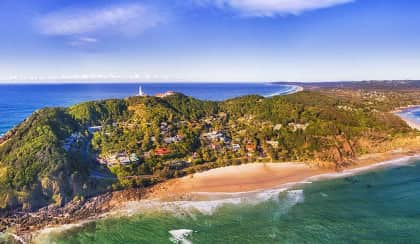60-day STRA cap placed on Byron Shire Council
Following a planning proposal submitted by the council, the NSW government has endorsed a plan to decrease the number of days short-term rentals can be leased per year.

As opposed to the current 180-day cap, the new rules, which will kick into gear on 26 September 2024 in anticipation of the busy summer holiday period, will limit the number of days a short-term rental property can be leased out to 60 days per year in the Byron Shire Council area. A 12-month transition period has been granted to allow the community and industry to prepare for the changes.
However, the new rules will not apply to all short-term rental accommodations (STRA), with certain sections of Byron Bay and Brunswick Heads with high tourism appeal, such as those near beaches or services, allowed to operate without a cap.
Moreover, hosted short-term rentals – properties where the host resides on the premises during any holiday stays – are unaffected by the decision.
In April, the Independent Planning Commission (IPC) handed down the findings of its Short-Term Rental Accommodation Planning Proposal, which outlined a 60-day STRA cap would create the “financial settings needed to incentivise the use of properties for long-term rentals while also continuing to support the incidental use of homes as non-hosted STRA”.
Given the higher proportion of Byron Shire Council housing dedicated to STRA, the government and the IPC accepted it as necessary to introduce the cap in an attempt to rescue supply back to the long-term market at a time when supply is critically required.
NSW Minister for Planning and Public Spaces Paul Scully explained: “It’s well-known there has been an undersupply of housing, particularly affordable and diverse housing across Byron Shire for many years.”
“This shortage of housing largely affects key workers and permanent residents,” he stressed.
Mr Scully conceded: “These changes to short-term rental accommodation only addresses part of Byron’s housing supply and affordability issues.”
On top of the cap, the NSW government announced the Department of Planning and Environment would be working with the council to monitor its commitments to increased housing supply, which includes a goal of delivering 4,500 homes by 2041.
He added an understanding of the council’s plan to produce more housing is an important step in his decision-making process.
“In the current housing crisis, it’s important every available means to boost housing stock for the community is utilised, including a shift from non-hosted STRA to long-term rentals,” Mr Scully said.
However, the position of the NSW government and Byron Shire Council has been questioned. Colin Hussey, chief executive at A Perfect Stay, believes “holiday rentals are being used as a red herring or a scapegoat.”
Speaking to Smart Property Investment’s sister website, REB, back in April, Mr Hussey explained his belief the region’s housing crisis is not driven by short-term rentals, especially given approximately 1,000 of the region’s 20,000 dwellings are listed for use as STRA.
“The real issue is there hasn’t been enough infrastructure, there hasn’t been enough thought, there hasn’t been enough put into providing appropriate accommodation for all different levels,” he said.
“What it’s doing is deflecting the fact that they haven’t actually done anything for 20 years,” Mr Hussey added.
For more on this matter, click here. For more on STRA’s impact on the Australian housing market, click here.
SPI’s coverage of the Byron Shire Council’s STRA cap will continue in the coming weeks.
